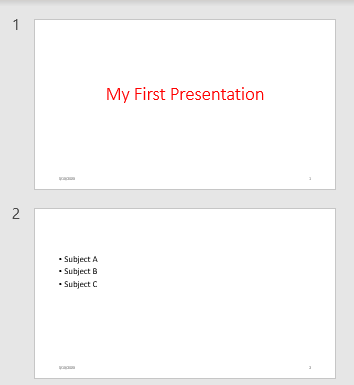mlreportgen.ppt.Presentation 类
命名空间: mlreportgen.ppt
创建一个 Microsoft PowerPoint 演示文稿容器
描述
创建对象
描述
presentationObj = mlreportgen.ppt.PresentationOutputPath 属性设置为输出演示文稿文件的默认完整路径。默认路径为当前文件夹,默认文件名为 untitled。TemplatePath 属性设置为默认 PPT API 模板的完整路径。
presentationObj = mlreportgen.ppt.Presentation(outputPath)OutputPath 属性的值设置为 outputPath。
presentationObj = mlreportgen.ppt.Presentation(outputPath,templatePath)templatePath 的值。当您想要使用自定义模板时请使用此语法。
如果 outputPath 和 templatePath 参量指定相同的演示文稿,则指定的演示文稿将成为新演示文稿的模板。当新的演示文稿生成时,它会取代原来的演示文稿。
属性
方法
示例
版本历史记录
在 R2015a 中推出
